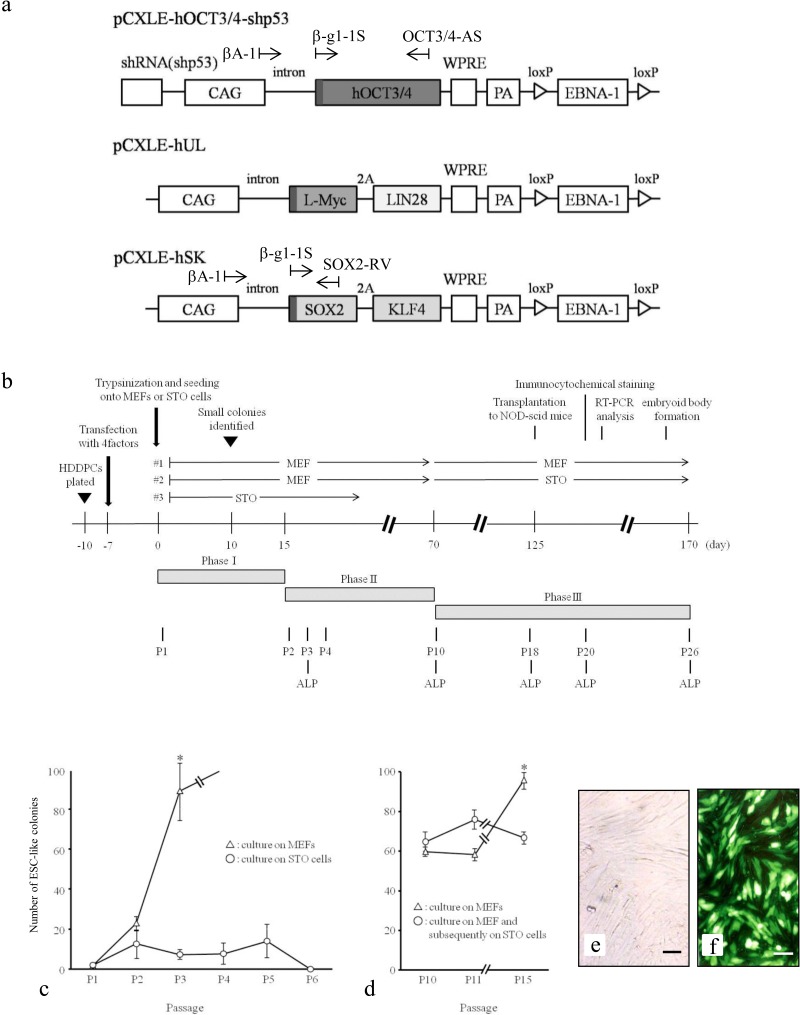Figure 1.
Generation of human deciduous teeth dental pulp cell induced pluripotent stem cells (HDDPC-iPSCs). (a) Plasmid vectors used for reprogramming. The location of each primer is denoted above the construct. shRNA(shp53): short hairpin RNA for tumor protein 53 (p53); CAG, cytomegalovirus enhancer + chicken β-actin promoter; WPRE, woodchuck hepatitis virus posttranscriptional regulatory element; PA, poly(A) sites; EBNA-1, Epstein–Barr nuclear antigen 1. (b) Reprogramming protocol of HDDPCs. HDDPCs were plated (day −10) in the absence of a feeder layer and transfected (day −7) with three different plasmid vectors. Seven days after transfection, the emerging colonies were then reseeded onto mouse embryonic fibroblasts (MEFs) or STO cells (an immortalized line established from mouse Santos inbred mouse (SIM) embryonic fibroblasts resistant to 6-thioguanine and ouabain). This first passage of embryonic stem cell (ESC)-like colonies was designated as passage 1 (P1). Staining for alkaline phosphatase (ALP) activity was performed on P3, P10, P18, P20, and P26. NOD-Scid, nonobese diabetic-severe combined immunodeficient. (c, d) Determination of colony formation efficiency. Approximately 17 days after transfection, several foci were observed. The number of growing colonies appeared to be the same regardless of feeder type, but after P1, the number of ESC-like colonies seeded onto MEFs increased at least up to P5; however, the number of cells seeded onto STO cells did not (c). In contrast, the number of growing colonies appeared to be the same between those continuously grown on MEFs and those grown on MEFs and then grown on STO cells at P10 (d). (e, f) HDDPCs before (e) and after (f) transfection. When enhanced green fluorescent protein (EGFP)-derived fluorescence was inspected 1 day after transfection, more than 70% of the cells were successfully transfected, as shown in (f). Bars: 50 µm.

